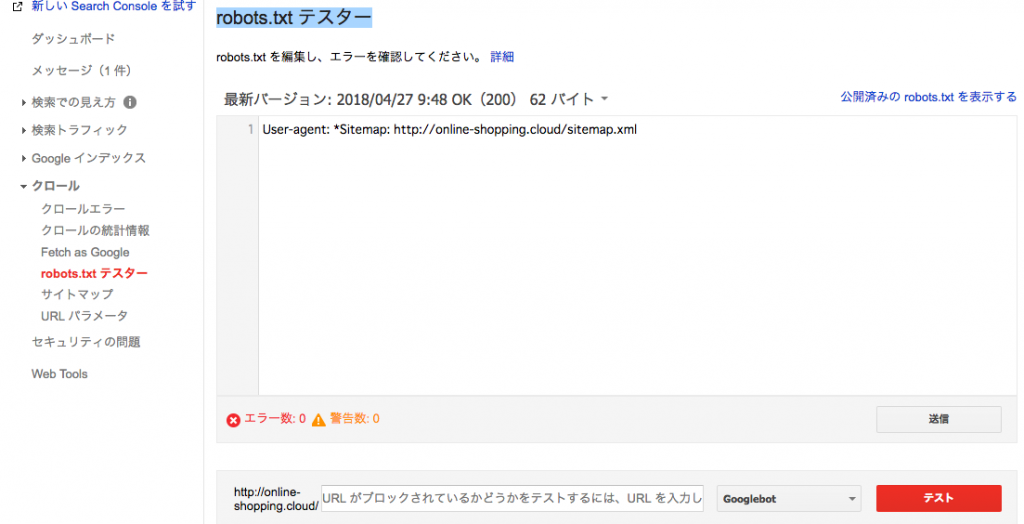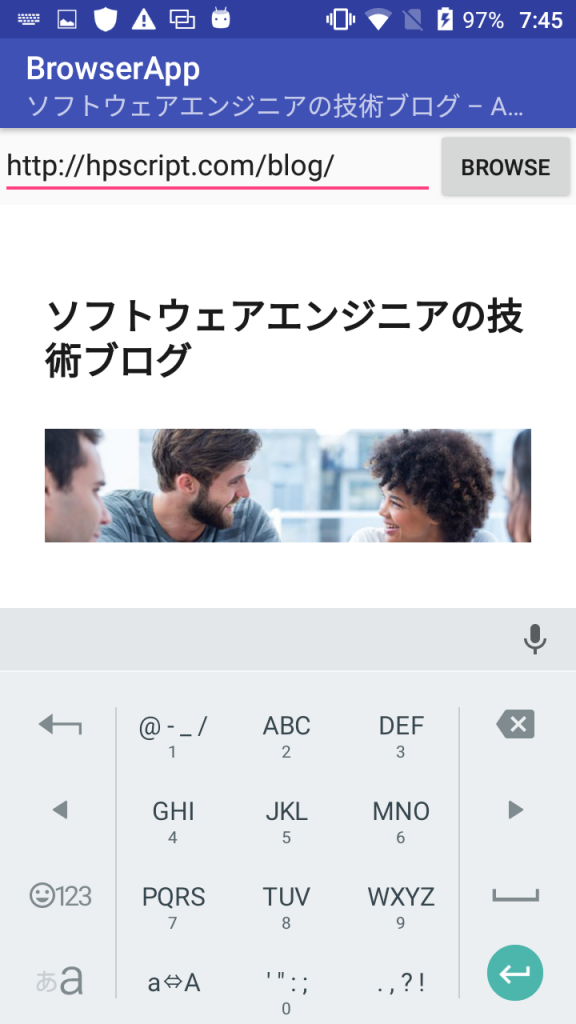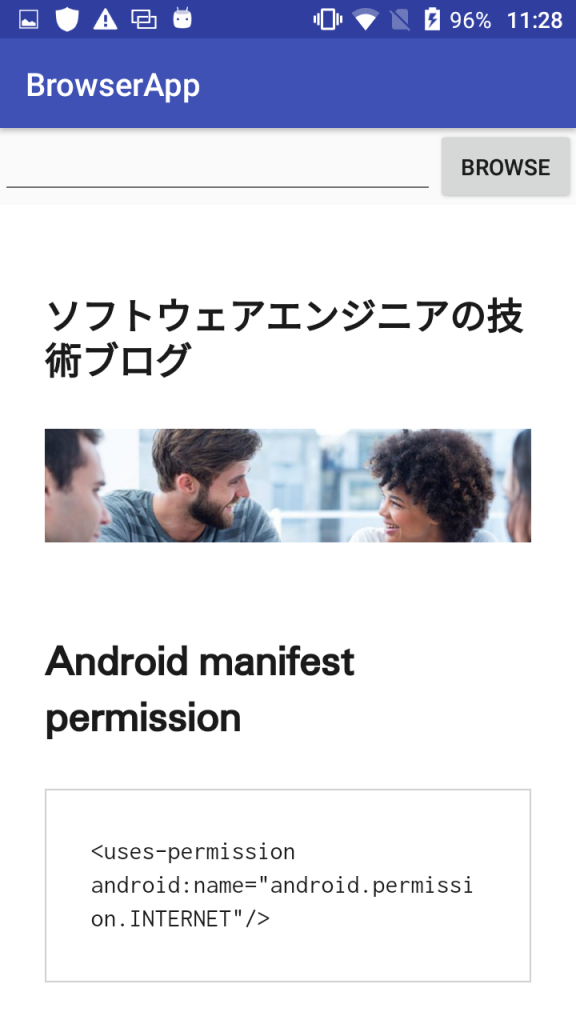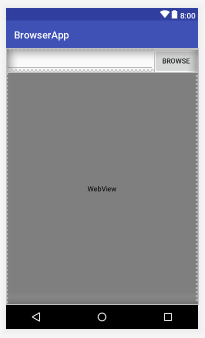まずsitemap.xmlを作る
changefreqで更新頻度
lastmodifyを動的に出したいが、ここではなし
<?xml version="1.0" encoding="UTF-8"?> <urlset xmlns="http://www.sitemaps.org/schemas/sitemap/0.9" xmlns:xsi="http://www.w3.org/2001/XMLSchema-instance"> <!-- created with free sitemap generation system www.sitemapxml.jp --> <url> <loc>http://online-shopping.cloud/</loc> <priority>1.0</priority> <changefreq>always</changefreq> </url> <url> <loc>http://online-shopping.cloud/ranking.php</loc> <priority>0.9</priority> <changefreq>daily</changefreq> </url> <url> <loc>http://online-shopping.cloud/tweet.php</loc> <priority>0.8</priority> <changefreq>always</changefreq> </url> <url> <loc>http://online-shopping.cloud/model.php</loc> <priority>0.5</priority> <changefreq>hourly</changefreq> </url> </urlset>
次にrobots.txtでsitemap.xmlを知らせる
User-agent: *Sitemap: http://online-shopping.cloud/sitemap.xml
google search console
ダッシュボードのクロール -> robots.txt テスター




